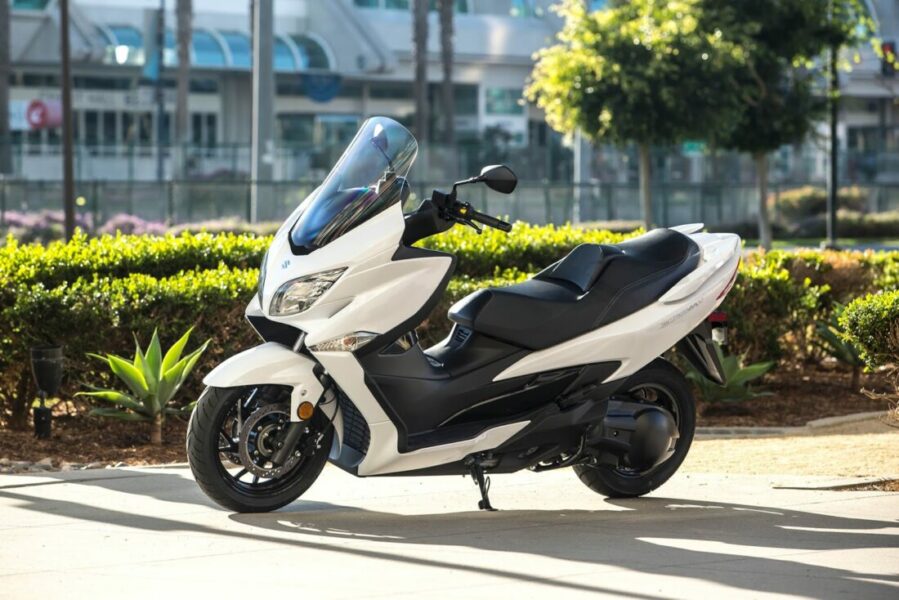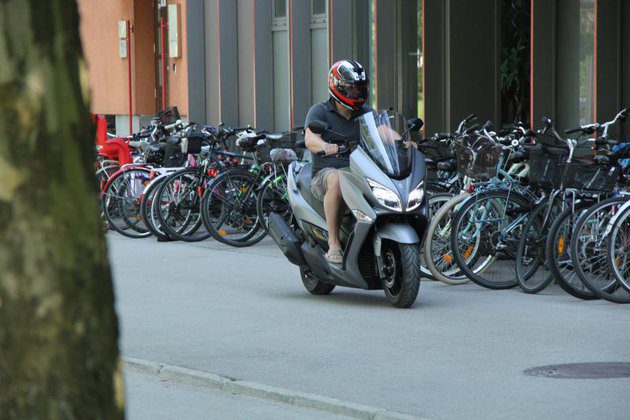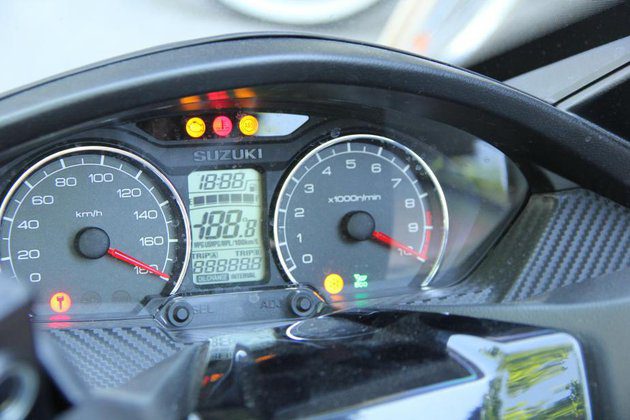
Test: Suzuki Burgman 400 (2018)
Content
If you are one of those who value comfort, practicality and a spoonful of prestige, then you probably know the Suzuki Burgman. 2018 is also a jubilee year for Suzuki Burgman: two decades have passed since the first generation hit the road, then with 250 and 400 cc engines. See Shortly thereafter, the role of Burgman with travel ambition shifted to the larger twin-cylinder Burgman 650, and the 400cc model. See has thus evolved into a middle-class category.
Since then, of course, a lot has changed, especially in the area of handling and, of course, performance.

This is why the current Burgman 400 has undergone many changes and improvements, which should be enough to maintain its leading position in sales. Although competitors are gradually moving away from the all-classic scooter design, Suzuki insists on the long and low silhouette that has been characteristic of this model since its inception. This means that the latest generation Burgman is also comfortable and spacious, and is suitable for drivers of all ages and sizes.
Refreshing for improved driving performance and practicality
New for 2018 includes a redesigned frame that makes the scooter narrower and overall slightly more compact than its predecessor. The driver's position at the wheel remains upright and the seat is softer. The windshield is also new, and the LED lighting is integrated into the new, slightly more pronounced design lines.
In general, during the week of my communication with Burgman, I got the feeling that the main thread of this treat was, first of all, practicality. Except for the rear-view mirrors, which are too close to the driver's head, everything is in place. At the gas station, you won't bump your helmet into the windshield or break your back if you want to refuel while sitting. It's the same with the trunk. This one is not the largest in its class, but in terms of form and accessibility it is one of the best.

Performance - perfectly in line with class expectations, economical fuel consumption
Liveliness in this volume class is usually not a topic of conversation, as the power for fast acceleration, as well as relatively high cruising speeds, is enough. The engine electronics and transmission are designed to operate in the low engine speed range, which can result in low fuel consumption. In tests, it stabilized at around four and a half liters per hundred kilometers, which is a pretty decent result. But, as in the case of competitions, Burgman often moves at a speed of more than one hundred kilometers per hour, it is often better to decide to slow down than to overtake. Burgman is good at braking. ABS comes to the rescue with triple disc brakes, and with the weight transfer over previous models, much of the responsibility lies with the front brake, which, together with the larger wheels, of course contributes to a good final impression.
Modern design details, closer to the classics in the field of toys
Despite all the improvements, Suzuki will also have to consider bringing Burgman closer to customers in areas where competition has already won. I mean more modern locking and candy systems like a richer trip computer, smartphone connectivity, USB (standard 12V is standard) and similar innovations that we really don't need. For those who really know about this fact, the Burgman 400 will continue to be a great companion for every day.

Basic data
Sales: Suzuki Slovenia
Base model price: € 7.390 XNUMX €
Test model cost: € 7.390 XNUMX €
Technical information
engine: 400 cm³, single cylinder, water-cooled
Power: 23 kW (31 hp) at 6.300 rpm
Torque: 36 Nm at 4.800 rpm
Energy transfer: stepless, variomat, belt
Frame: steel tube frame,
brakes: front 2x discs 260mm, rear 210mm, ABS,
Suspension: front classic telescopic fork,
rear single shock, adjustable tiltTires: before 120/70 R15, rear 150/70 R13
Growth: 755 mm
Fuel tank: 13,5 liters
Weight: 215 kg (ready to ride)
We praise and reproach
appearance, spaciousness, comfort,
convenience of everyday use, ease of maintenance
boxes for small items,
Parking brake
Rearview mirror position, overview
Contact blocking (delayed and inconvenient double unlocking)
final grade
Suzuki Burgman is hard at work writing his story. He does not imitate anyone and does not experience a crisis of his own identity. Thus, he will convince anyone who loves to drive well, does not need a sea of data and believes in everyday practicality.
